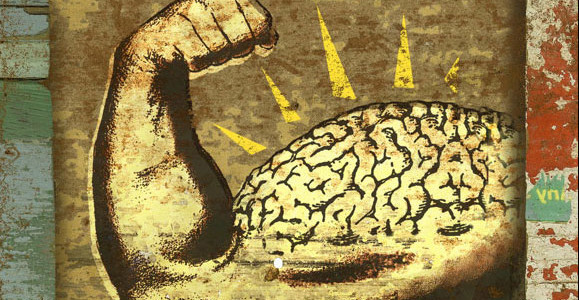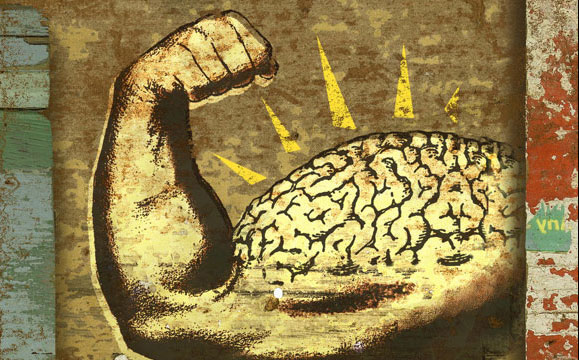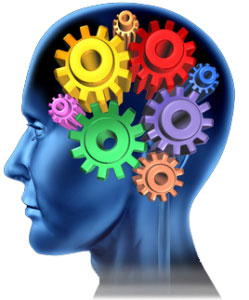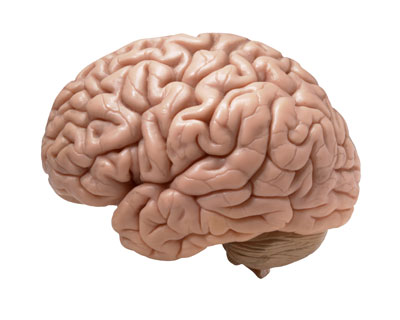
Brain boosters.
Cognition accelerators.
Memory enhancers.
Smart drugs.
However you want to call them, nootropics are simply creating a buzz in today’s health conscious society that view these substances as nothing less than superbly amazing in terms of unlocking the true potential of the human brain.
The Quest for Unlocking the True Potential of the Brain
Since time immemorial, man has always been fascinated with the inner workings of the brain. Starting out so pure, the brain slowly developed and evolved into what could otherwise be the human equivalent of a super computer. Yet, the true computing prowess of the human brain far exceeds the complex algorithmic capabilities of the world’s best and smartest super computer. It is humans, in the first place, who built these super computers.

When man began to understand the unique relationship between cells and the different chemicals that are found inside the body, he has already started on a quest, an exploration of sorts, which led to the discovery of a unique group of compounds that hastened the speed of nerve impulse transmission in the brain. The discovery led some experts to believe that the human brain’s full potential can be harnessed leading to greater memory retention and recall, much more efficient cognitive processes, improved focus and concentration, and better learning.
The ramifications of such findings are astounding, to say the least. If the true power of the brain can be unleashed at will, the implications for human development as well as technological advances are far and wide. Scholastic endeavors will be spurred into full gear and the scientific community will never run out of brilliant minds who can become the next Einstein, Newton, or even Hawking. As such, this will also turn the wheels of development at an even faster rate such that what we know now today may already be obsolete tomorrow. It is this inherent inquisitive nature of man that is creating a demand for the establishment of a credible source of information regarding such discoveries as nootropics.
While we are going to go there eventually, it is truly remarkable to see that a lot of people are buying into the current media hype regarding memory enhancing drugs or smart drugs. What are highly suspect in this situation are not necessarily the questions about the supposed effectiveness of nootropic agents per se but rather the potentially harmful side effects of these substances on the human body. This concern is more readily apparent when talking about nootropic agents that have been synthesized under laboratory conditions. While laboratory testing will ensure that the chemicals used to manufacture a synthetic nootropic are safe, its potentially unseen harmful effects on the body might as well negate the perceived beneficial effects on the brain’s true potential.
This is why a lot of people are getting anxious because of what they read on paper related to some of the side effects of memory enhancing drugs. Some members of the medical community have also voiced concern about the possibility of dependence issues as nootropics are generally taken as cerebral stimulants. The current notion on cerebral stimulants is such that it can lead to dependence and addiction in later stages. This concern had been voiced ever since the very first nootropic agent came out in the early 70s.
The Need for Facts About Nootropics
Faced with a dizzying array of nootropic products – from pharmaceuticals to nutraceuticals as well as supplements and even functional food varieties – the general public deserves to know the truth about these so-called memory enhancing substances.
The main concern lies on the veracity of reports and published documents purporting the effectiveness of such products in the enhancement of one’s memory, learning, and cognition. As there are so many products that claim to have memory enhancing features, consumers need to be equipped with the right knowledge in order to identify the right nootropic agent for their use. As concerns on the relative safety of synthetic nootropics continue to mount, despite official claims saying otherwise, people are more inclined to getting nootropics that contain all-natural ingredients.
These natural nootropics are undoubtedly more preferred in sharpening one’s memory, improving the ability to learn new things, and enhancing overall cognitive processes in the human brain without worrying about any potentially harmful side effects.
Nonetheless, it is our duty to provide the reading public all the facts necessary to make an informed decision related to the purchase and use of the correct type and brand of nootropic product. Only then can the full benefits of nootropics on cerebral functioning and mental and cognitive health be fully realized.
A Glance at History
 Based on the Greek words ‘nous’ and ‘trepein’ which literally means ‘mind’ and ‘to turn or bend’, respectively, the term nootropic was first introduced into usage in the medical scientific community by the Romanian chemist and psychologist, Corneliu E. Giurgea in 1972.
Based on the Greek words ‘nous’ and ‘trepein’ which literally means ‘mind’ and ‘to turn or bend’, respectively, the term nootropic was first introduced into usage in the medical scientific community by the Romanian chemist and psychologist, Corneliu E. Giurgea in 1972.
The term was used to describe the effect of a particular substance that was able to show significant improvements in the person’s working memory, attention, and motivation.
This first memory boosting and cognitive enhancing drug was called piracetam and had been a mainstay in the treatment of several cognitive disorders as well as in the management of sensory-deprived patients after a cerebrovascular accident.
Giurgea described nootropics as essential substances that are helpful in aiding the brain perform many of its mental functions, primarily related to memory and learning. It is viewed that piracetam, and any other nootropic agent that follows, should be able to provide ample protection to the brain against injuries – physical or otherwise.
The discovery of Giurgea of nootropics spurred the use of these memory enhancing drugs among students at highly competitive universities and colleges all over the world. Their use in the academe was largely to improve scholastic achievement and enhance academic productivity without necessarily leading to recreational use.
Mechanism of Action of Nootropics
Crucial to understanding nootropics is how they work in the first place. As there are different classes of nootropics, each one acting on a different neurotransmitter on the brain, it is important to understand these individual mechanisms of action in order to achieve insight into the effectiveness of nootropics.
- Cholinergic nootropics increase the levels of the neurotransmitter acetylcholine which is primarily involved in the retention of new data or information, the performance of calculations and analyses, control of inhibitions and attention span, and providing direct access to both short- and long-term memory. Examples of cholinergic nootropics include choline bitartrate, centrophenoxine, and huperzine A.
- Racetams are direct descendants of the first nootropic – piracetam – and are often described as similar to cholinergics in mechanism of action, except that they do not increase the levels of acetylcholine. Instead, racetams enhance the sensitivity of the acetylcholine receptors. Aside from piracetam, other racetams include phenylpiracetam, aniracetam, pramiracetam, and oxiracetam.
- Dopaminergic nootropics improve cognitive processes, heightens alertness, and increases energy levels while at the same time offering a sense of happiness and pleasure. Examples of dopaminergic nootropics include sulbutiamine, l-tyrosine, and l-dopa.
- Serotonergic nootropics improves the overall mood of the individual. Examples of serotonergic nootropics include 5-hydroxytryptophan and l-tryptophan.
- Adaptogenic nootropics are plant-derived nootropic agents that work by reducing the sensitivity of the brain to stressors in the environment which can significantly damage brain cells. Examples of adaptogens include Kava Kava, St. John’s Wort, ginseng, Passion flower, and Gotu Kola.
- Metabollics nootropics are agents that improve blood supply to the brain, thus enhancing the cognitive and mental processes. Examples of metabollics include vinpocetine, Ginkgo Biloba, phosphatidylserine, and creatinine.
- Stimulant nootropics act by increasing energy levels, promoting wakefulness, and enhancing alertness. Examples of stimulant nootropics include amphetamines, caffeine, and modafinil.
All-natural nootropic products often contain a variety of nootropic agents that can work synergistically. For example, some products contain Ginkgo Biloba, vinpocetine, Ginseng, l-tyrosine, and huperzine A which should give these products a mechanism of action that closely resembles that of cholinergic, dopaminergic, adaptogenic, and metabolic nootropics.
A Brief Overview of the Human Brain
 Since we are talking about how to unleash the power of the brain, it is important to spend some time understanding a few important things about the human brain.
Since we are talking about how to unleash the power of the brain, it is important to spend some time understanding a few important things about the human brain.
The brain is composed of four major lobes that are grouped in two hemispheres. The frontal lobe is responsible for memory, learning, and motor while the parietal, temporal, and occipital lobes are primarily tasked with sensory integration. The brain is composed of billions of neurons as well as other neuronal support structures.
While the brain only weighs 2 to 4 percent of your total body weight, it is one of the most energy-dependent organs in the body, accounting for roughly 15 percent of the total blood volume. Your brain uses the oxygen and glucose found in blood in order to burn about 20 percent of the body’s energy molecule, the adenosine triphosphate, or ATP.
Powering up the Brain
The brain is entirely dependent on a steady supply of oxygen and glucose in order to perform its many metabolic processes. Glucose is the primary food for the brain. In the resting state, the human brain consumes more than 60 percent of the total glucose in the body.
Glucose is taken up in the mitochondria of neurons where it is converted into ATP. A three-step process yields no more than 38 ATP molecules for every molecule of glucose. However, in oxygen starvation, each molecule of glucose can only yield two ATP molecules.
Neurons use ATP for three distinct purposes: neurotransmission, maintenance of the electrical membrane potential, and the maintenance of neurons and neuronal structures.
Adenosine triphosphate is needed to facilitate the effective nerve impulse transmission along the entire length of the neuron. This is achieved by the depolarization of the membrane potential to allow for the movement of sodium and potassium ions across the membrane channels. This is needed in order to propagate the electrical impulse. ATP is also required in the secretion, packaging, re-uptake, and transport of neurotransmitters at the synaptic junction. While other cells of the body have the ability to regenerate after serious injury, brain cells, unfortunately cannot grow again once damaged. It is for this reason that massive amounts of ATP are utilized to maintain the integrity of the nervous system.
Cutting Off Blood Supply to the Brain
As the brain is entirely dependent on oxygen and glucose that is present in the blood, cutting this lifeline will have grave consequences to the brain. Depending on the length of time that brain was deprived of both oxygen and glucose and depending on the part of the brain that was affected, serious complications can arise. While the body has a backup system when such situations arise, it can only buy you just enough time to get yourself to the hospital. Otherwise, you will be left with permanent neurological deficits, if not your ultimate demise.
Thus, any condition that significantly reduces the amount of oxygen and glucose in the blood can have significant effects on the overall functioning of the human brain. In such cases, mental and cognitive functioning will be severely hampered.
Relating to what has been presented earlier, the importance of supplying the brain with adequate oxygen, glucose, and other important nutrients cannot be simply overstated. It is also for this reason why a combination of all-natural nootropic agents is believed to be generally more effective than single-ingredient nootropics. The synergistic effect of these ingredients provide for a more well-rounded approach to ensuring optimum brain functioning.